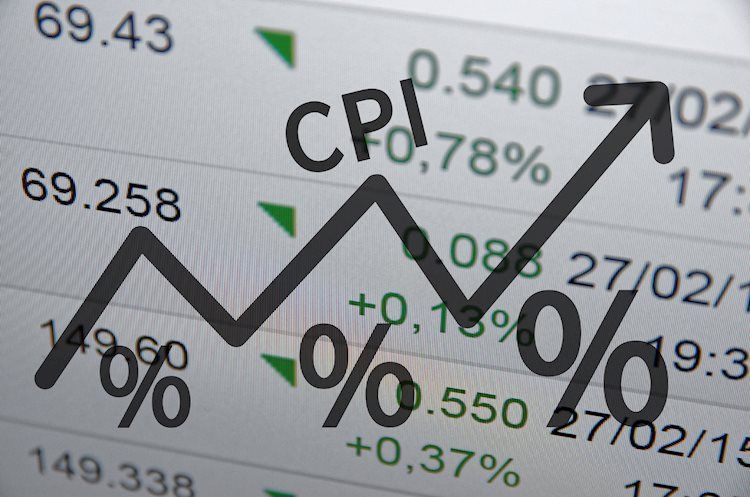Big tech investors weren't disappointed Tuesday, as Alphabet reported better-than-expected earnings after the bell. Google's parent company Alphabet's revenue rose 15% year-over-year, with advertising revenue increasing more than expected. And more importantly, Google Cloud posted solid 35% year-over-year growth. The division's revenue last quarter was $11.4 billion, comfortably beating analyst estimates of $10.5 billion. Yesterday, Google rose about 1.66% before earnings and rebounded nearly 6% after earnings. The company might have done even better if it weren't for the serious regulatory issues it faces, including an antitrust lawsuit that challenges its monopolistic position. The lawsuit could require the company to sell major assets such as Android, Google Play, and Chrome. rough. But either way, Alphabet's move is another argument against investors worried about slowing demand for AI.
And certainly, the AMD news wasn't sexy. One of Nvidia's biggest rivals released a lackluster earnings forecast for the current quarter, a message raising concerns about a potential slowdown in AI sales. Today, it's Microsoft and Meta's turn to reveal their last quarter results. Apple and Amazon will report earnings on Thursday, followed by Exxon and Chevron on Friday.
However, the latter may not be as enthusiastic as their technical peers. BP released its quarterly results yesterday, but the news was mixed. The company reported the slowest profit growth in nearly four years due to low oil prices. This exceeded expectations and was on top of a $1.75 billion share repurchase program. Sadly, the company warned that it may change its strategy of buying back $1.75 billion worth of shares every three months due to low oil and gas prices. The stock price fell 5%.
As for crude oil prices, barrels of US crude oil continued to be under selling pressure yesterday, rising slightly this morning on the back of a small decline in US oil inventories (API), but the trend and momentum are changing. The indicators continue to trend downward and remain steady. Resistance is noted at the psychological level around $70pb, which also coincides with a small 23.6% Fibonacci retracement of the July-September decline. The decline in geopolitical tensions that supported the bull market until this week has given way to Chinese growth concerns and supply-demand debates, both of which are negative for oil prices. In fact, the World Bank believes global oil supply will exceed demand by 1.2 million barrels per day next year. That makes me wonder if OPEC will step in to put a lower bound on a deeper decline.
data
On the data front, the first glimpse of U.S. jobs data was a relief to dovish Feds. U.S. job openings have fallen to their lowest level since 2021, and the Atlanta Fed's GDP Now forecast fell below 3%, according to JOLTS data released yesterday. As a result, the yield on the US 2-year bond is currently testing the 4% level, and the yield on the 10-year US bond is stable at around 4.25%. The dollar index weakened after hitting its highest since summer.
The ADP report is currently in the spotlight. Analysts estimate the U.S. economy may have added about 110,000 new private jobs in October. Softer-than-expected data could further support the Fed's dovish stance and weigh on the USD, while the data looks solid until we get more clarity from Thursday's GDP and core PCE data and Friday's numbers. is unlikely to hurt bets on interest rate cuts. Official employment report.
But before that, there's a lot of numbers to digest from elsewhere. Earlier today, Australia revealed that inflation in the third quarter was higher than expected. However, September's numbers were lower than analysts had expected, with Australia bears continuing to lead the market. AUD/USD remains at 65 cents, under pressure from broad-based US dollar strength and weaker iron ore prices on concerns that China's stimulus plans are not enough to spur desired growth and support iron ore prices rose towards the level.
Here in Europe, the major eurozone countries are scheduled to release their preliminary CPI figures for October today, with headline figures expected to rise for the month. If so, euro bears could strike back and the euro-dollar, which has fallen four digits since the end of September, could rebound. Initial resistance is noted at 1.0870, close to its decline and the minor 23.6% Fibonacci retracement of the 200-DMA, with key resistance located at 1.0935, the major 38.2% Fibonacci retracement. These holdouts could be seriously challenged if the U.S. jobs report is surprisingly weak this week.
Elsewhere, cable tested the 1.30 level ahead of today's Budget announcement, amid hopes that Rachel Reeves will tactfully handle her biggest tax hike announcement in recent memory. The price has consolidated above $153 ahead of tomorrow's Bank of Japan meeting. ) The decision is not expected to bring anything new, if not a promise of more support for the economy, amid heightened political uncertainty.
Bitcoin has hit its highest since March as the odds of Trump's victory have increased, and the stock price of Trump's media and technology group has also soared for the first time in five weeks. Prediction markets place Trump's chances of winning next week's presidential election at more than 60%, but the latest CNN poll puts both candidates at a 47% chance of winning, with assets leaning toward Trump. Profits are fragile.

